Welcome back to Forgotten Silver, everyone! Last month’s focus on environmental giveaways from the 1960s and 1970s demonstrated the breadth of these types of publications that were released in Canada during the era. As the giveaway era was overtaken by the Underground Comix movement in Canada during the early 1970s, a small sliver of environmental comics with counterculture messaging emerged in the country. This month’s second part of my overview of environmental-themed comics from the Canadian Silver Age may not include nearly the same number of comics as the ones I discussed last month, but there are some goodies here and some wider connections to the environmental movement that are sometimes overlooked by comic collectors.
Let us start with some of these wider threads. Underground comix in Canada were heavily influenced by the emergence of the genre in California during the late-1960s. That said, the underground movement in Canada was spread out and generally involved small groups of creators who self-published, with the exception of the short-lived series of publications from Vancouver’s Georgia Straight and some bandes-dessinées publishers in Quebec.
The Georgia Straight newspaper emphasized illustrated content in its early years and its subsequent comic publications were at the forefront of the Underground comix movement in Canada. Indeed, the company propelled the career of Canada’s most celebrated Underground creator, Rand Holmes. Unfortunately, the enforcement of obscenity laws (stemming from the then already decades old Fulton Bill) led to the Georgia Straight only publishing a handful of standalone comic books.
Ultimately, the Georgia Straight only published four one-shot comics, all of which were released in 1972. Three of these comics were Rand Holmes publications, including the oversized The Collected Adventures of Harold Hedd, as well as All Canadian Beaver Comix and White Lunch Comix (which Holmes collaborated on with Jim Jones, whose work makes up the majority of the latter comic). Both The Collected Adventures of Harold Hedd and All Canadian Beaver Comix would be reprinted by San Francisco publisher Last Gasp throughout the 1970s.
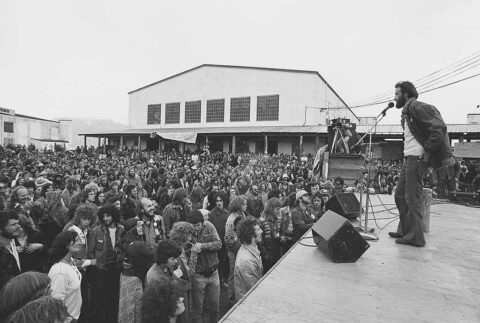
These three comics published by the Georgia Straight do not include environmental themes. Instead, the countercultural elements of Rand Holmes’ comics tend to focus on the themes of sex, drugs and satire that were prominent in the movement. The other comic published by the Georgia Straight is Bob Hunter’s Time of the Clockmen. A bizarre science fiction comic that was never reissued, the one-shot is among the most coveted of all Canadian Underground comix due to the importance of its creator.
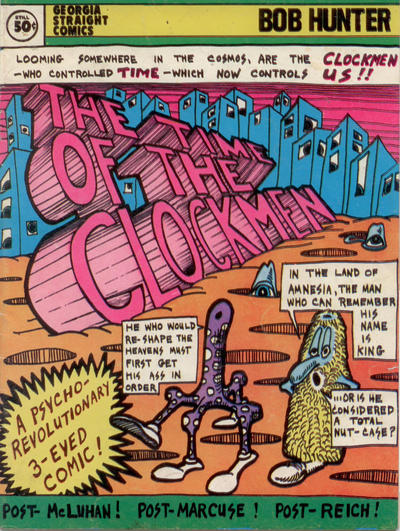
Bob Hunter was at the forefront of the emerging environmental movement in Canada. A journalist by trade, Hunter got his start working at the Winnipeg Tribune before joining the staff at the Vancouver Sun during the late-1960s. Hunter’s reporting focused on the counterculture movement and emphasized environmentalism. British Columbia was at the centre of this emerging environmental movement and Hunter was involved with the 1969 “Don’t Make a Wave Committee,” an anti-nuclear organization that later developed into Greenpeace. Hunter continued his involvement with the group and was one of the founders of Greenpeace in 1971, becoming the organization’s first president. He later was involved with Paul Watson’s Sea Shepherd Conservation Society and led the world’s first on-sea anti-whaling campaign. His involvement with this campaign contributed to the ban on commercial whaling in the 1980s.
Hunter remained a public figure until his death in 2005, but Time of the Clockmen was his only professional comic. Although the comic is not an explicit work of environmental activism, it describes an apocalyptic future that has resulted from environmental collapse. Hunter enthusiasts are well aware of the publication, making it something of a crossover collectible. It is the rarest comic published by the Georgia Straight and is rumoured to have only had a print run of 500 copies. It tends to sell for hundreds of dollars when it comes to market, but most extant specimens that we have encountered are low to mid-grade.
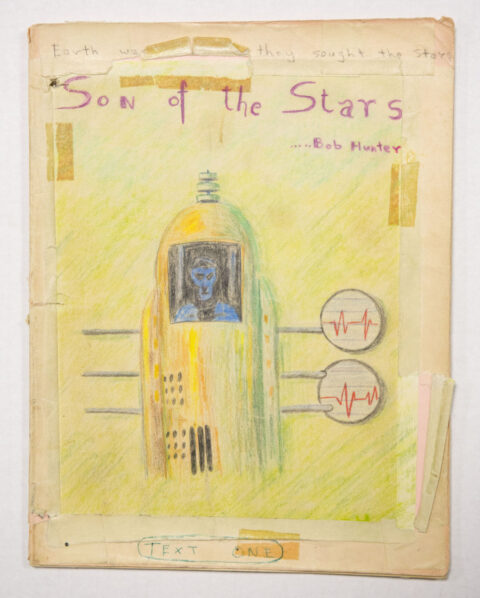
Although Bob Hunter is arguably the most famous environmental figure to ever produce a comic book in Canada, Saskatoon’s Dave Geary likely published the first Underground comic with environmental themes during the Canadian Silver Age. Geary was one of the most prolific Underground creators in Canada, self-publishing over a dozen comics in the 1970s and 1980s. Despite being the most important Canadian figure from the Underground era not named Rand Holmes, Geary is often overlooked, but should be on the radars of Canadian comic book collectors. In my opinion, you cannot consider yourself a serious aficionado of the Canadian Silver Age if you do not have one of Geary’s comics in your collection.
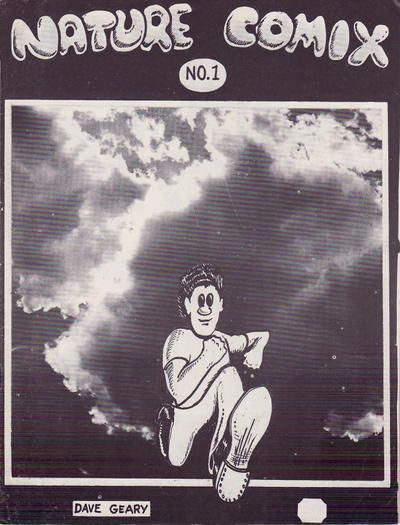
One of Geary’s earliest comics is 1970’s Nature Comix. This magazine-sized publication includes several short (often one-page) satirical stories. The series had a second issue that was also released in the early 1970s. Both comics sport environmental stories, but just as many of the stories included in each issue are completely unrelated to such themes. The first issue of the series comes up for sale fairly regularly, which suggests a large print run. The second issue is scarce, having a print run of only 500 issues. A patient collector may be able to find the first issue for around $50 CAD, but expect to pay several hundred dollars for issue # 2 if you can find one.
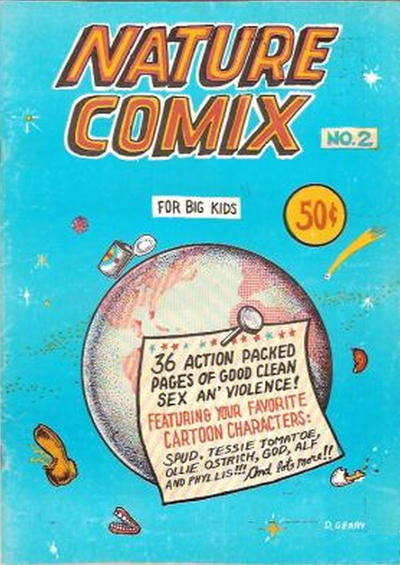
The majority of Geary’s comics from the 1970s and 1980s are designed similarly insofar as stories in any given comic tend to be short and jump around thematically. Subsequent series such as Beer Comix, Bridge City Beer Comix and Bridge City Revue share similar formats to the Nature Comix series. There is one comic, however, that breaks the mould and is an explicit environmental satire: 1975’s Gopher Freedom with art by Geary and a story by Terry Zimmer.
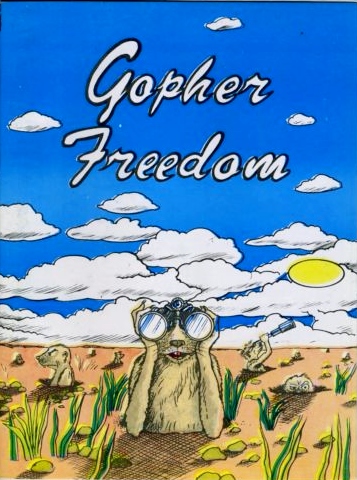
Gopher Freedom tells the story of how Saskatchewan has always been “God given gopher territory.” However, the lives of gophers have been disturbed by American infiltrators stealing natural resources (such as oil, water, and soil) and exporting them to the United States. In the comic, the gopher population forms an army to combat the Americans, engaging in guerrilla warfare to protect the land and its resources. The gophers set booby traps for American troops leading to numerous violent deaths and apparent surrender. Not to be outdone by gophers, the Americans create an army of gopher-sized cloned mutants to wage a second military campaign. “Operation clone” is a decisive failure for the Americans, with the gophers again succeeding through guerrilla warfare. The comic ends with the gophers again repelling their enemies and salvaging what is left of Saskatchewan’s natural resources.
Gopher Freedom is a special comic. It is one of the only works from Dave Geary’s bibliography that tells a complete, cohesive story from cover to cover and is one of the few early Underground comics that is distinctly Canadian. The anti-American sentiment oozes through the pages and the comic is quite silly. However, it points to larger concerns from the era about the exploitation of Canada’s natural resources and destruction of the environment by foreign companies and governments that was an important motivation for the fledgling environmental movement and continues to be salient today. This is also one of Geary’s easiest to source comics, with copies coming to market often. Expect to pay $30 to $50 CAD for a specimen. Note that there are two cover variants, one with a price printed on it and the other without. The cover variants also have some colour differences.
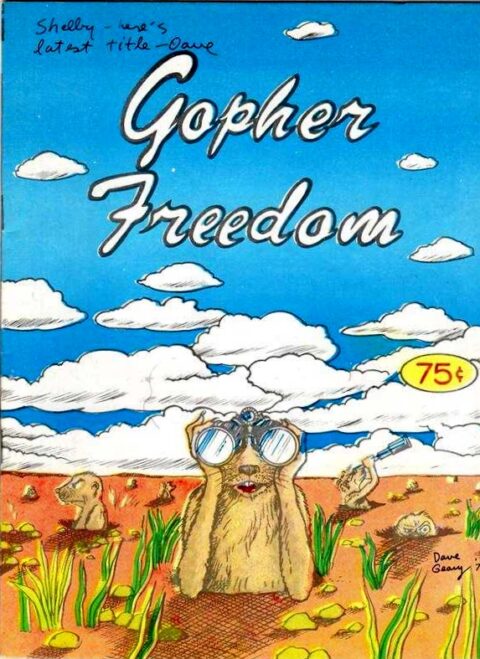
Of some interest is that Geary would continue to use gophers in his comics off and on over the next two decades, with one of his more popular stories, the photo-comic “A Boy and His Gopher” appearing in 1982’s Bridge City Revue # 2 and later released as a mini in 1985. Geary would continue to be an important figure in the Saskatchewan comic scene well into the 1990s and 2000s, but in recent years his artistic output has been more oriented around combining horror movie influences with environmental themes.
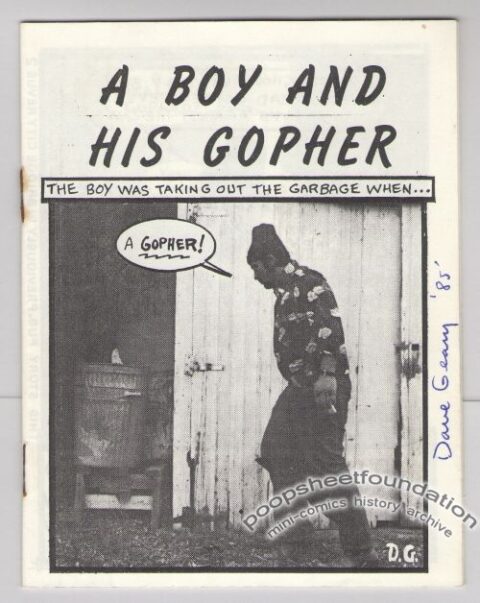
Despite the single comic created by one of Canada’s key environmental figures, Bob Hunter, and Dave Geary dabbling with environmental themes in his early comics, Gopher Freedom is the first truly environmental Underground comic created in Canada. It would be two years before another one was released. Indeed, 1977 and 1978 saw the creation of four distinctly different environmental Underground comics.
One of these comics, John Lodder’s 1978 Yukon Komix # 1 is similar to Geary’s issues of Nature Comix insofar as the comic includes environmental themes, but also presents different types of stories that are typical of the Underground movement. I mentioned Yukon Komix in my article about comics from the Great White North last year, so I will not delve into any additional detail here.
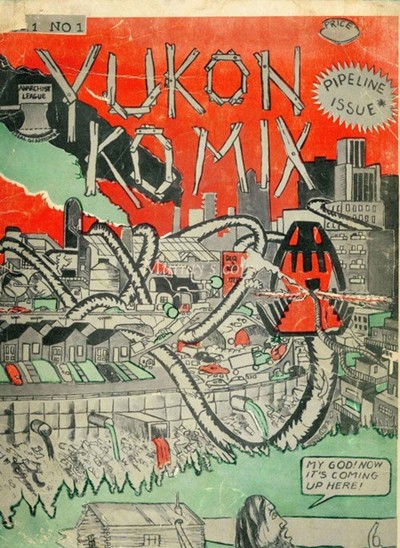
This leaves me with three comics from 1977 and 1978 that are truly oriented around issues of environmentalism. The first, 1977’s Skreefer Madness (also referred to as Treeplanter’s Funnies) was published in Vancouver by Comadre Productions and had a print run of 1000 copies. Unfortunately, the comic did not find an audience and approximately 450 copies were distributed. The remaining copies are rumoured to have been destroyed in a house fire in 1986. This makes finding a specimen incredibly difficult. I lucked out on one several years ago, but my copy is ratty.
Skreefer Madness is a unique slice of the environmental scene insofar as it was designer for and by British Columbia’s tree planters, sported its own hippie mascot (Skreefer McDuff) and is an example of the coming together of the counterculture movement and government oriented land management. Today, tree planting for the sake of reforestation is a significant part of British Columbia’s forest management strategy and 2020 could see a record 300 million new trees planted. This was not always the case. In the early 1900s, reforestation was seen as both unnecessary and uneconomical due to assumptions about the forest’s resources being infinite. By the 1930s, this attitude began to change, but it wasn’t until the 1950s that reforestation through tree planting started to take hold in British Columbia. By the 1970s, this effort was in full swing and, by all accounts, tree planters were paid handsomely for their work at the time.
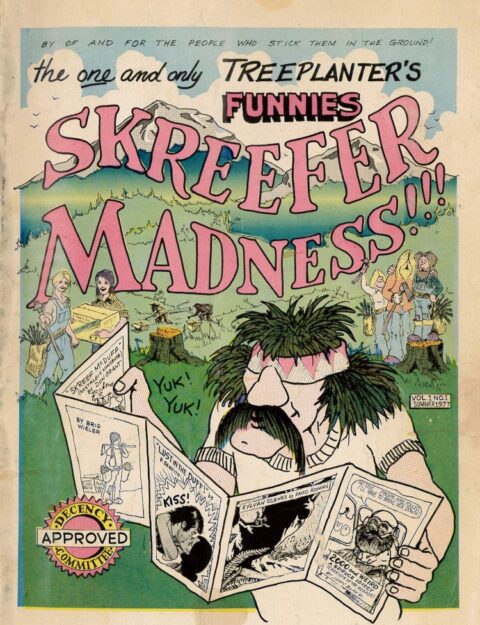
Skreefer Madness offers a glimpse into this form of land management from the view of the 1970s hippies who were involved in the practice. The comic is a collaborate effort by several different artists, who do not seem to have become involved in comics beyond this one-shot. The artists include: Don Grant, Brig Wieler, F. Bandito, David Roman, and John Blake. Unfortunately, I have no information about the contributors beyond the stories and artwork that they contributed to the comic. Despite the rarity of this comic, Canada’s online reforestation hub, Replant.ca, has made the comic available in its entirety.
1977 also saw the publication of one of the earliest comics created by a First Nations artist in Canada: Tales of Raven # 1 (“No Tankers, T’anks”) by artist Michael Nicoll Yahgulanaas and activist/cartographer John Broadhead. The comic was published by the Coalition Against Supertankers (CoASt) as part of the broader anti-pipeline and anti-oil tanker activism that emerged in British Columbia during the 1970s and continues to this day. The comic was published on Haida Gwaii (formerly known as the Queen Charlotte Islands), which is an archipelago off the coast of British Columbia and was released at a time of heightened tension and activism directed by Haida people and their allies.
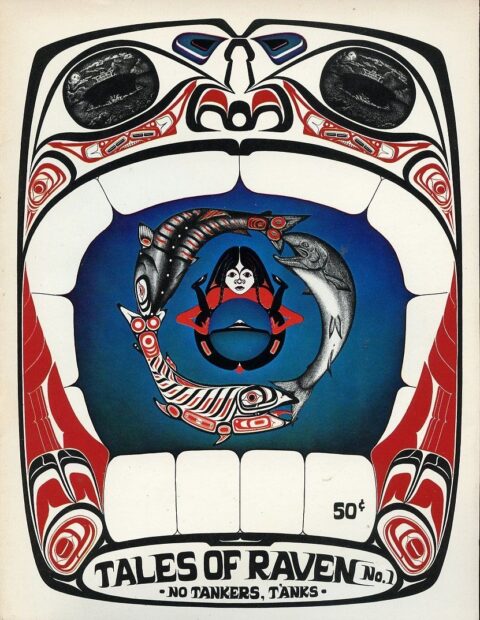
In 1968, Oil was discovered in Prudhoe Bay, Alaska and the American government immediately began to make plans to build a 1,300 km pipeline across Alaska to the port of Valdez. Less than a year later, the Santa Barbara oil spill occurred off the coast of California, in what was then the largest disaster of its kind in American history. Canada suffered from a similar devastating oil spill off the coast of Nova Scotia in 1970, when the aging Arrow oil tanker ran aground during a storm polluting 3,000 km of Cape Breton’s coastline. These incidents led to opposition to the Alaskan pipeline on both sides of the border and helped to spur the creation of Canada’s federal Department of Environment in 1971. In 1973, Canada’s federal government passed a moratorium preventing crude oil tanker traffic through the Inside Passage (which includes the Hecate Strait, Dixon Entrance and Queen Charlotte Sound). This was soon expanded to all federal waters on the west coast. The provincial government, however, did not officially enact a similar moratorium until after the Exxon Valdez disaster in 1989, due to pressure from Alberta to create pipelines that would connect to the port of Kitimat.
All of this led to a great amount of anti-tanker and anti-pipeline activism among coastal communities in British Columbia and the Haida people were one of the most vocal groups opposing such projects. Tales of Raven # 1 is an important example of this movement in comic book form. The comic is not as rare as some of the others I have mentioned this month, having a print run of 3,000 copies, but it rarely comes to market. It has been several years since one appeared and the jury is out on its current value.
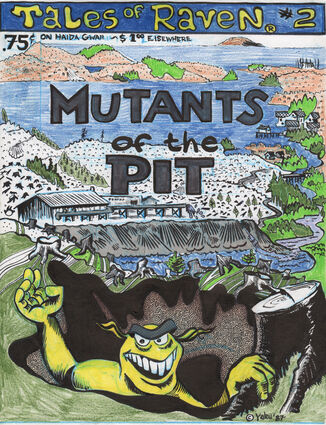
John Broadhead has continued to be involved in environmental activism on Haida Gwaii, particularly with the Gowgaia Institute. Michael Nicoll Yahgulanaas would go on to become a famed sculptor and painter with works on display at prestigious galleries around North America. However, he continued to dabble in comics. A second issue of Tales of Raven (“Mutants of the Pit”) was published in 1987 and had a print run of 2,000 copies. Unfortunately, we have never found an extant specimen surface for sale. Luckily, Nicoll Yhgulanaas has made the comic available on his website. Both comics were also reprinted in the 2012 book Old Growth: Michael Nicoll Yahgulanaas. Since the turn of the century, Nicoll Yahgulanaas has also published several comics in a distinctive style that he has dubbed “Haida Manga.”
The final entry on the list of environmental Underground comix from the Canadian Silver Age takes us back to Saskatchewan. In 1978, art student Shelley Sopher and commercial fisherman John Piper published Nuclear Dragons Attack! In La Ronge through their own company, Chickadee Press. The comic was created as an attempt to rally First Nations and Métis residents against uranium mining in the province. According to Comixjoint, Sopher had never read an Underground comic and was instead inspired by communist Chinese comics. From what I can ascertain, Sopher did not create any additional comic books.
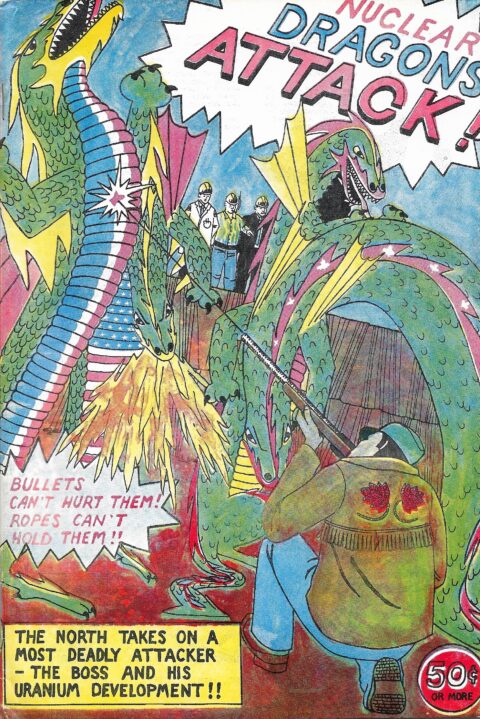
The comic is estimated to have had a print run of around 1,000 copies, but was not successful. Copies can be found for as little as $20 CAD when they come to market. The comic was poorly researched and I can confirm that it is filled with contradictions. Indeed, Comixjoint’s reviewer is quite critical of the comic in a contemporary review. The story attempts to rally aboriginal residents in terms of how uranium mining would affect their lifestyles, rather than emphasizing the dangerous of nuclear energy development. The comic was a response to an aggressive push corporate mining interests to persuade the Canadian government to open up uranium mining in the province, but ultimately fails to present a persuasive argument.
The comic had little impact and uranium mining continued to proliferate in Saskatchewan due to the high quality of the ore in the province. Today, the only uranium mines in the country still operate in the province and account for as much as 20% of the world’s uranium output.
There you have it. Are you surprised by the small sliver of environmental comics released in Canada as part of the Underground Comix movement during the 1970s considering the breadth of environmental giveaways a decade earlier? Do you know of any comics that I missed? Let me know in the comments section.

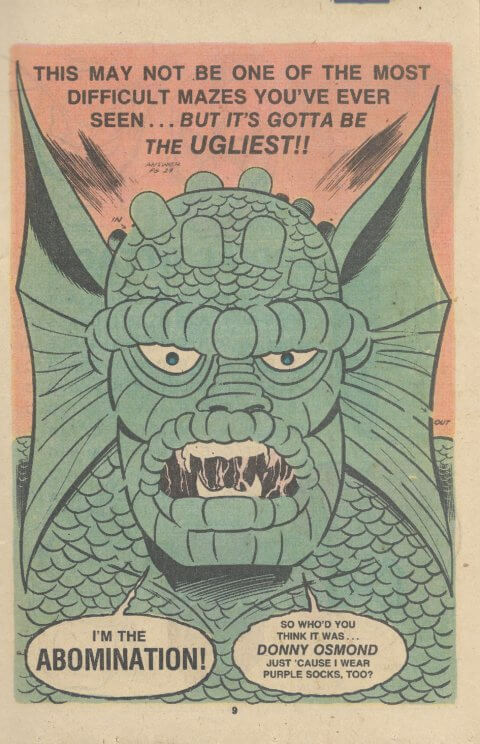
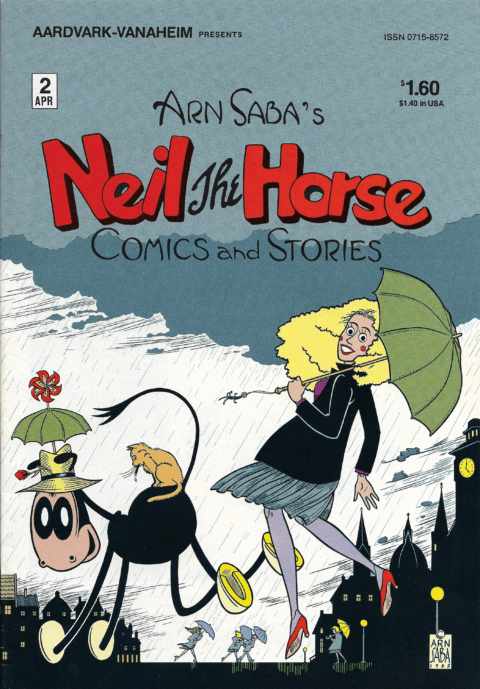
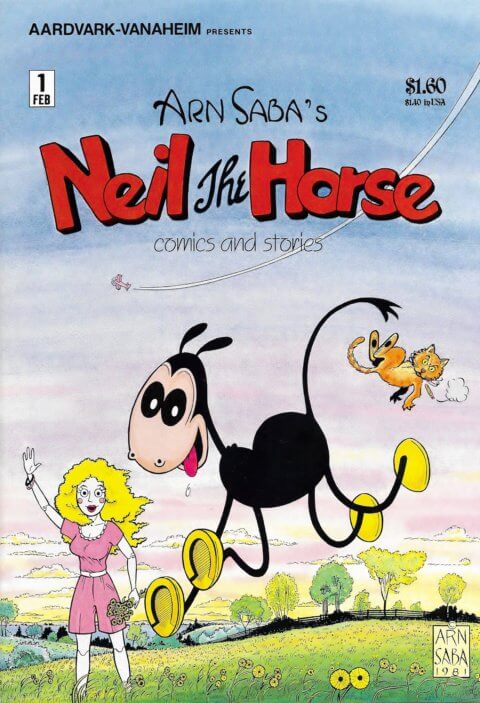
I wish I had something to offer about all these comix, having handled countless underground comix from 1970 on. But I don’t think I carried more than two or three among all these titles. They often suffered from simply bad art. Another issue was being overly preachy. As much as we support the environmental movement now, it was not mainstream in the 1970s. Slow Death helped to kickstart the theme in comics, but there you had it masquerading as apocalyptic science fiction, always a popular theme. And for the most part, the artists in SD were much better, including Corben and Irons.
At one point I was attempting to handle, for my mail order business, every underground comic published. But it wasn’t more than a couple years, maybe by 1972 or 1973, I found that very few collectors wanted them all. Attempting to be honest in my descriptions, I would have to state “for completionists only,” my way of saying something had no redeeming features.
I certainly didn’t personally want the nadly drawn and written among them. Like the legendary early “crudzines,” many UGs were just plain crap and not appealing. I am afraid some of the titles above got swept into this category, regardless of the importance of their message. I bet I got samples of several and turned them down, I will have to go thru my UG slush file and see if I find any of these, I might still have the samples along with notes from the publishers…
Thanks for the very informative article.
As you mention, the work by Rand Holmes was the exception. I handled the first editions of his work, then the very popular reprints from Last Gasp. That oversized Harold Hedd was a pain to pack and ship. An excellent biography of Holmes came out a few years ago, and its worth finding. He was a very interesting guy, living the alternate lifestyle.
Thanks for chiming in, Bud. I think that you hit the nail on the head regarding issues of quality that is one of the pitfalls of collecting (and even researching) UG comix. Although it is easy to point to the great artists of the era from the USA (Crumb and Shelton immediately come to mind) and Canada (Holmes), there were significantly more publications that are of questionable quality from both sides of the border. This is true for some of the British UG comix that I have seen, as well as the Quebecois comix that I have only covered briefly here.
Bob Hunter’s “Time of the Clockmen” is okay, but it does not stand out among the sea of comix that were released at the time. It’s significance is its connection to the man himself, but more as an historical curiosity than anything else. Skreefer Madness has an eye-catching cover, but its contents are hit and miss. Nicoll Yahgalunaas’ work looks good, but the low distribution of the two comics makes them easy to overlook. I think that the very specific audience (you use the word “preachy”) likely prevented a wider appeal for his work at the time. Geary’s work is the standout here, by leaps and bounds. “Gopher Freedom” in particular is one of my favourite Canadian Silver Age comics, regardless of decade or genre. This helps to explain why Hunter’s comic and Geary’s work in general tend to be collectible/valuable, while the other publications I profiled this month are not comparable. The jury’s out on the two “Tales of Raven” issues due to a lack of sales data.
The other comics profiled this month are likely of the sort that you would have avoided carrying. At least, that’s my impression. I think your phrase, “for completionists only,” certainly applies. Please do let me know if you find evidence of having turned down any of these publications in your slush file.
I also think that what you are saying clearly applies to the alternative comics of the 1980s too, perhaps even more so. For every Teenage Mutant Ninja Turtles, there were dozens of garbage titles trying to ride the wave of the explosion of black and white publications in the USA. This applies to the Canadian scene from that era too, but I have yet to delve into this era in a concrete way in this column yet. I have some plans to do so, but maybe not until next year.
I agree that the oversized Harold Hedd comics are hard to ship. They are also hard to store. I have mine bagged and boarded in something designed for movie lobby cards. I can live with it because Holmes was such an exceptional talent.
Cheers, brian